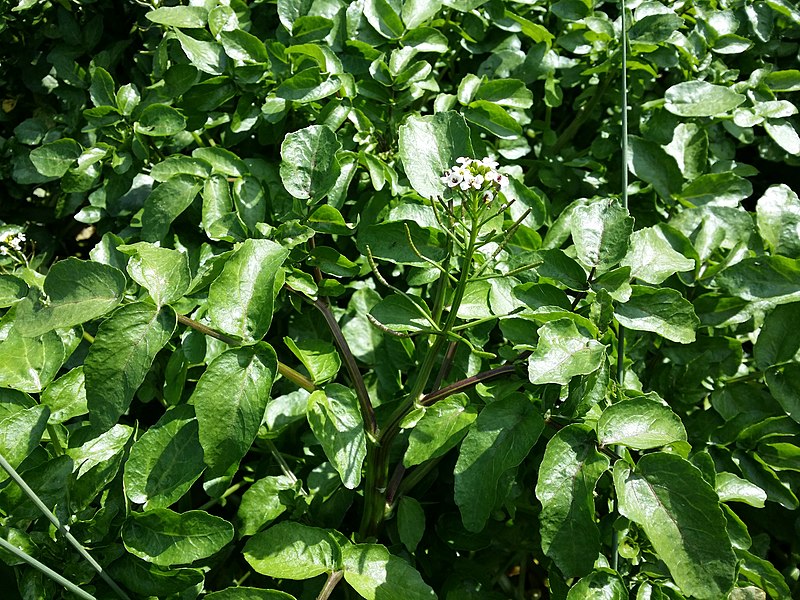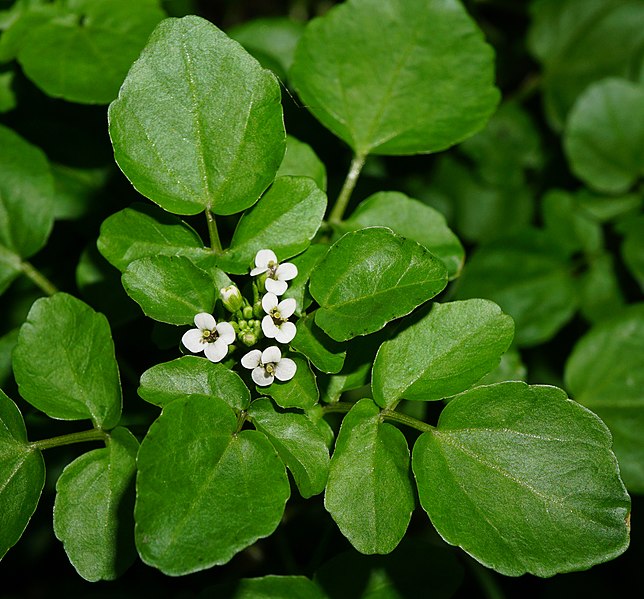Watercress Identification – Nasturtium officinale
Heads up
Watercress, scientifically known as Nasturtium officinale, is a familiar green leafy plant known for its sharp, peppery taste. It belongs to the Mustard family, which in botanical term is called the Brassicaceae family. But before diving into the nitty-gritty of the plant, you might recognize it by its other names, like Small-leaved Water-cress.
Watercress: Key Parts in Photos



Where to find it
This water-loving plant thrives in cool, shallow water bodies. If you’ve ever strolled near streams, springs, or even seeps, you might have seen it decorating the muddy banks. It’s also common in wet ditches and ponds. You’d typically find watercress basking in either partial shade or full sun. While watercress might be a treat for our salads, it’s considered invasive in some places. This means it can spread quickly, potentially making life hard for local plants.
How to identify Watercress
When it comes to the leaves, they are quite distinct. These are compound leaves, meaning they’re made up of several smaller leaflets. These leaflets can be lance-shaped or elliptic. The edging of these leaflets is somewhat irregular. The largest leaflet is usually at the tip and could be almost round. One more thing, both the stems and the leaves are smooth, with no hair.
The stems can either stand erect, stretching up to 3 feet or more, or float on the water’s surface. Often, they sprawl across the mud, they can root at their nodes and form dense mats. This helps the plant spread effectively.
One of the easiest ways to identify watercress is through its flowers. The plant has a cluster of blossoming flowers at the tip of its branching stems. Each small flower, about ¼ inch across, sports four white petals. If you look closely, you’d see six yellowish stamens (those are the pollen-producing parts) and a purplish-green section, which is the ovary. The fruit is a slender pod, curving slightly. When the seeds inside mature, they turn a reddish-brown shade.
